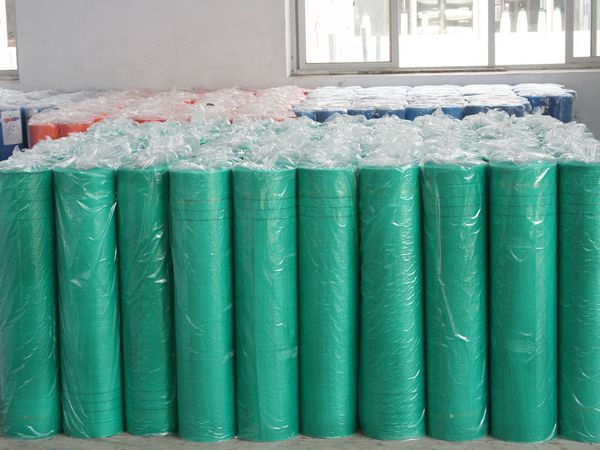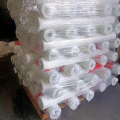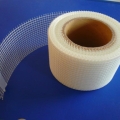- Supply Fiberglass mesh cloth for concrete from China manufacture
- market@husker-roller.com
Fiberglass screen mesh rolls have become a cornerstone of modern window and door screening solutions. Combining durability, affordability, and versatility, these rolls are widely used in residential, commercial, and industrial settings. Whether you’re looking to enhance energy efficiency, prevent pest infestations, or improve airflow, understanding the nuances of fiberglass screen mesh is essential. This comprehensive guide explores everything from installation techniques to maintenance tips, helping you make informed decisions for your screening needs.

What Is Fiberglass Screen Mesh Roll?
Fiberglass screen mesh is a woven fabric made from tiny glass fibers coated with protective vinyl or latex. These rolls are manufactured by weaving continuous glass filaments into a grid-like pattern, creating a lightweight yet robust material. Unlike traditional metal screens, fiberglass does not rust or corrode, making it ideal for humid or coastal environments. The mesh size (measured by square inch count) determines particle filtration efficiency, with common options ranging from 18×14 (coarse) to 20×20 (medium) and 24×24 (fine).
Key Features and Benefits
- Durability: Resists rot, mold, and mildew, even in harsh weather conditions.
- UV Resistance: Coatings protect against sun damage, extending lifespan.
- Low Maintenance: Easy to clean with soap and water; no rust stains.
- Breathability: Allows airflow while blocking pests and debris.
- Cost-Effective: Affordable compared to aluminum or stainless steel alternatives.
Applications Across Industries
Residential Use
- Windows and Doors: Ideal for patios, balconies, and screened-in porches.
- Wildlife Protection: Keeps insects, birds, and rodents at bay.
- Energy Efficiency: Reduces drafts and heat loss in older homes.
Commercial & Industrial Use
- Greenhouses: Maintains ventilation without letting pests infiltrate.
- Warehouses: Protects large openings from dust and insects.
- Marine Environments: Withstands salty air and moisture.
How to Choose the Right Fiberglass Screen Mesh Roll
Selecting the appropriate mesh depends on your specific needs:
- Mesh Size: Coarser meshes (e.g., 18×14) block larger pests like wasps, while finer options (24×24) keep out mosquitoes.
- Roll Width: Standard widths are 12–50 feet; measure your window/frame dimensions carefully.
- Coating Type: Vinyl-coated is standard, but heavy-duty latex coatings offer extra tear resistance.
Installation Tips for DIY Enthusiasts
- Measure Twice: Ensure the mesh fits snugly without sagging.
- Use Quality Tools: A spline roller and utility knife simplify installation.
- Secure Edges: Tuck excess mesh into the frame and seal with caulk if needed.
- Check Alignment: Avoid misalignment to prevent gaps that let pests through.
Maintenance and Longevity Tips
- Clean Regularly: Remove dust and debris with a soft brush or hose.
- Avoid Harsh Chemicals: Mild soap and water suffice; abrasive cleaners may weaken fibers.
- Inspect for Damage: Patch small tears promptly to avoid spreading.
Fiberglass vs. Aluminum vs. PVC Screens
| Material | Pros | Cons |
|---|---|---|
| Fiberglass | Lightweight, rust-proof | Less rigid than aluminum |
| Aluminum | Durable, low-maintenance | Prone to denting |
| PVC | Waterproof, mold-resistant | Sags in extreme heat |
Common FAQs
Q: Will fiberglass mesh mildew in humid climates?
A: No, the vinyl coating resists mold and mildew growth.
Q: Can I use fiberglass screens in high-traffic areas?
A: Yes, but opt for heavy-duty 20×20 mesh for added strength.
Q: Are these meshes recyclable?
A: Most are recyclable; check local guidelines for disposal.
- Mesh fiberglass screen for pipes
- Fiberglass Plaster Mesh & Wall Reinforcement Techniques: A Comprehensive Guide for Modern Construction
- Fiberglass Self-Adhesive Mesh Tape:Construction Repairs & Waterproof Sealing
- Home Depot Fiberglass Mesh: Window Screens, Repair Solutions
- Stucco Fiberglass Mesh: Exterior Wall Reinforcement & Crack Prevention
Shan County Fiberglass Mesh
China Shan County Fiberglass Mesh factory supplying Mesh screen for pests and mesh cloth for concrete building materials
在线留言
© 2025. All Rights Reserved. Theme By XinTheme









